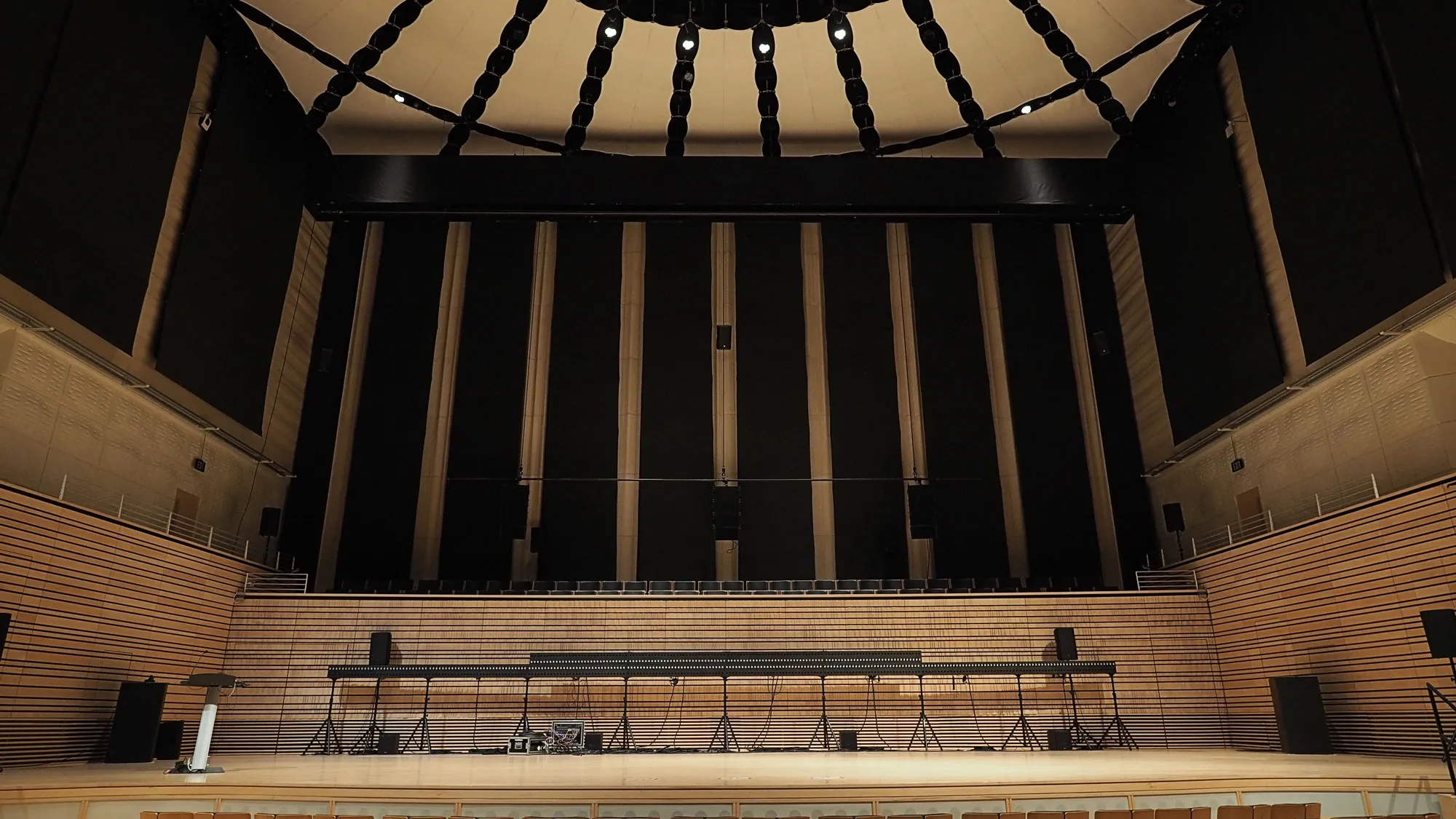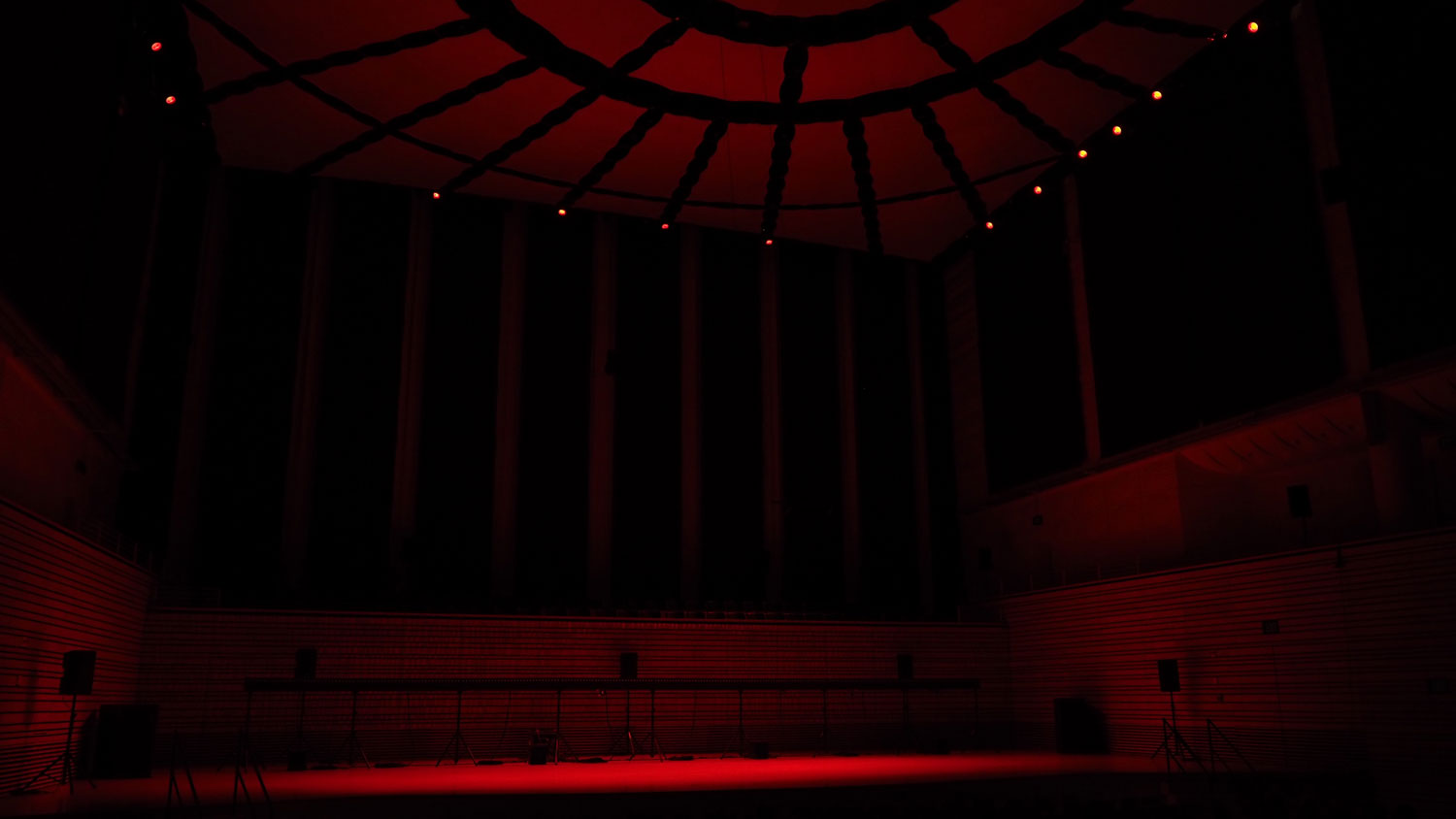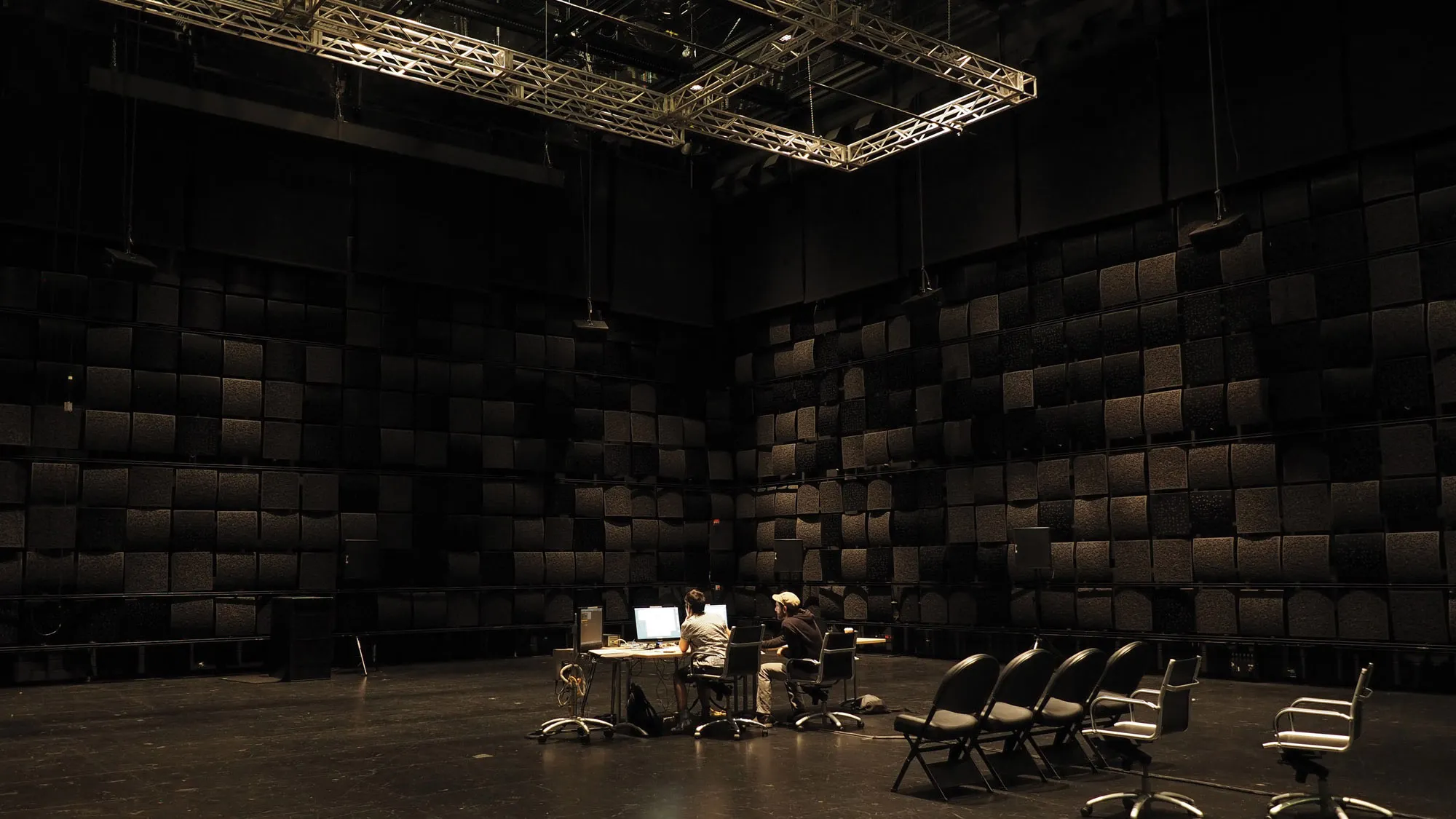
Hans Tutschku
During the second night of public concerts highlighting EMPAC’s Spatial Audio Summer Workshop, Hans Tutschku will present four multi-channel electronic compositions arranged for a large array of loudspeakers. Tutschku is a master in the creation and performance of music that includes sonic movement, space, and scale as important features of the listening experience. For this performance, Tutschku will adapt his work for a 248-channel Wave Field Synthesis array and 60-channel Ambisonic dome surrounding the audience in EMPAC’s Concert Hall.
PROGRAM:
- Rituale (2004)
- agitated slowness (2010)
- –intermission–
- remembering Japan - part 1 (2016)
- Issho-ni (2014)





